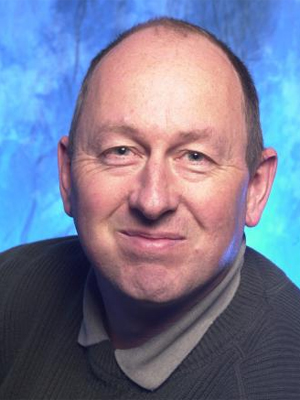Calit2's Paul Gilna Appointed to Top Job at BioEnergy Science Center
San Diego, Feb. 5, 2010 -- A top researcher and administrator at the California Institute for Telecommunications and Information Technology (Calit2) is moving from one frontier to another – from marine microbial metagenomics to the emerging field of bioenergy.
|
Paul Gilna, a Senior Research Scientist in the UCSD Division of Calit2, has been selected as the new Director for the Department of Energy’s BioEnergy Science Center (BESC). BESC is headquartered at Oak Ridge National Laboratory; Gilna and his family will relocate to Oak Ridge, Tenn., in April. The BESC team consists of nineteen institutional and individual-investigator partners with extensive experience in biomass research. The range of partners includes Dartmouth College, The University of Georgia, The Samuel Roberts Nobel Foundation, The Mascoma Corporation and the National Renewable Energy Laboratory.
The mission of the BESC is strongly focused on the fundamental understanding and elimination of biomass recalcitrance—the resistance of cellulosic biomass to enzymatic breakdown into sugars, the single-greatest barrier to cost-effective production of biofuels from plant feedstocks. BESC is part of a $375 million investment in Bioenergy Research Centers by the DOE Office of Science, Office of Biology and Environmental Research.
While at Calit2, Gilna worked as Executive Director for the Community Cyberinfrastructure for Advanced Marine Microbial Ecology Research and Analysis (CAMERA) project, funded by the Gordon and Betty Moore Foundation. “We are proud to have one of our own researchers selected to lead this important bioenergy center,” said CAMERA principal investigator Larry Smarr, founding director of Calit2. “Bioenergy is a promising form of sustainable alternative energy.”
In CAMERA, Gilna focused on advocating the marine microbial ecology research community’s needs within the project, as well as serving as ambassador for the project within that and many other microbial research communities. Drawing on his experience from previous projects, Gilna also helped establish the various data acquisition pipelines for CAMERA, such that the project established a “heartbeat” of a weekly data release update cycle that has been in existence without missing a beat for approximately a year and has led to a 10-fold increase in the data represented in CAMERA.
“We will miss Paul’s contributions to the CAMERA project,” said CAMERA Chief Technical Officer and Co-PI, Professor Mark Ellisman. “However, we look forward to future collaborations with Paul on important national issues.”
Related Links
CAMERA
BioEnergy Science Center
Media Contacts
Doug Ramsey, 858-822-5825, dramsey@ucsd.edu

